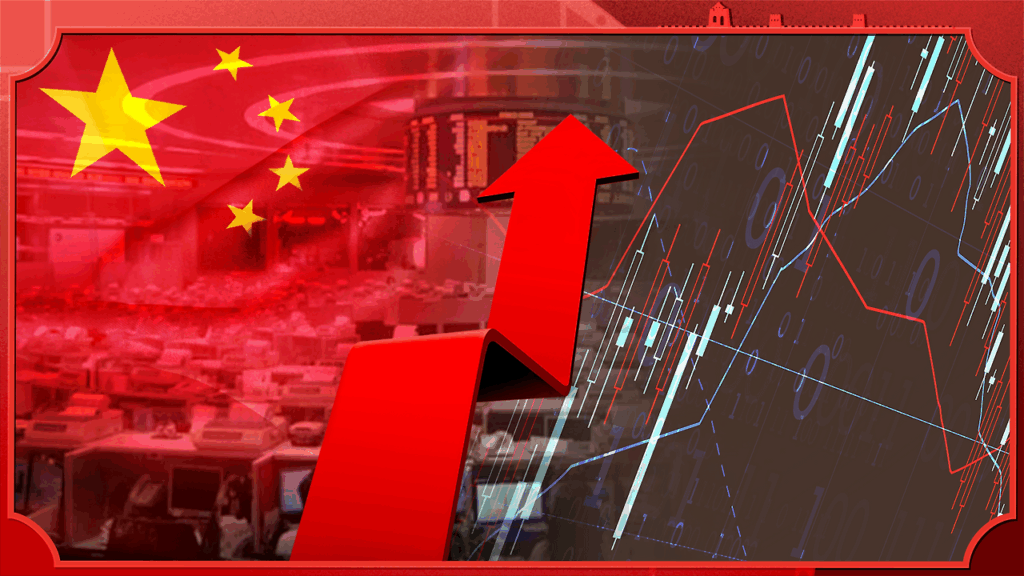
Is China’s stock market a hidden gem or a trap?
With rising technological strength, a full-scale manufacturing transition, and capital flowing into Hong Kong,
this article summarizes both the opportunities and risks in China’s investment landscape as of mid-2025.
Source: Analyst briefing on China markets – July 2025
1. China’s Economy: Macro Structural Shifts
Root Causes of the Slowdown
- ROI (Return on Investment) fell faster than interest rates—a core structural issue.
- Fierce domestic competition → Profit margin erosion.
- Local government fiscal stress and conservative central spending deepened investment slowdown.
Shift in Policy Direction
- Central government commits to aggressive fiscal expansion for 4–5 years.
- Deliberate decoupling from real estate as a financial pillar.
- Manufacturing loans expanding, while real estate loans have declined for eight consecutive years.
- Ongoing push for industrial upgrading and public-private innovation ecosystems.
- Unemployment is viewed as a “growing pain,” and leadership instability is seen as unlikely.
2. Changing Consumer Structure and Middle-Class Sentiment
MZ Generation Leads New Consumption Trends
- Shift from status-driven luxury to value-for-money + quality balance, with emotional consumption on the rise.
- Key growth sectors: Cosmetics, dining, travel, film, jewelry.
Drivers of Consumption Recovery
- Falling home prices in Tier 1 and 2 cities, rising savings (3 years of deposit buildup).
- Luxury goods consumption declining, while spending is shifting to services and experiences.
- Domestic brands outperform foreign brands in quality → Foreign market share stagnates (0–1% growth).
3. Capital Markets: Accelerating Flow Into Equities
Policy Support for Equity Markets
- Only 3–5% of household assets currently in stocks → Room for major inflows.
- Birth of pension and ETF markets → Asset allocation is being reshaped by policy.
- Stronger focus on buybacks, dividends, and corporate governance at SOEs.
Shifting Yield Environment
- 10-year bond yields near 1%, dragging down risk-free returns → Dividend stocks gain attractiveness.
- Deposit rates at 0.8–0.9% but still absorbing capital → Equities may become more compelling.
- Government encouraging insurers and banks to buy high-dividend SOEs.
4. Hong Kong IPOs and Capital Movement
Hong Kong IPO Boom
- “If listing in China is hard, list in Hong Kong” – Government promotes fast-track IPO process.
- Hong Kong IPOs expected to rank #1 globally in 2025.
- Watch sectors: Cosmetics, pharmaceuticals, emotional consumer goods.
Mainland Capital Flowing Into Hong Kong
- Rise in holding companies and succession-driven transfers.
- Mainland → Hong Kong capital shift is policy-driven and structural.
5. Sectoral and Industrial Investment Opportunities
AI & Autonomous Driving Ecosystems
- Transition from hardware/low-cost focus to platform/software ecosystems.
- CapEx leaders to watch: Xiaomi, BYD, Alibaba.
- Integration across robo-taxis, smart cars, and mobility platforms.
Strategic Commodities & Rare Earths
- Rare earth export decline in Apr–May → Strategic leverage in US-China negotiations.
- Themes of localization and self-reliance offer strong re-rating potential.
6. Risks and Strategic Responses
Structural Deflation Concerns
- Inflation response remains weak, even after aggressive rate cuts.
- Real estate restrictions continue by design, with delayed post-sale construction.
- PPI, PMI, and consumer recovery metrics must be closely monitored.
Investment Strategy Implications
- Rotational flows into top-tier domestic consumption leaders possible.
- Dividend-centric, Hong Kong-listed stocks merit attention.
- 10-year bond yield reversal would indicate recovery in policy effectiveness.
7. Investor Cautions in China
- China’s equity rallies are spike-shaped, not gradual → Expect volatility and sudden re-ratings.
- Focus on companies with global competitiveness and brand equity.
- Hong Kong IPO sector trends may serve as early signals for small-cap recovery in Korea and beyond.
8. Analyst Q&A Highlights
- Credit growth: Still expanding; liquidity conditions remain favorable.
- Local government debt: Unclear timeline for reduction; monitoring required.
- Rotation in top-tier consumer leaders: Possible; be cautious of short-term volatility.
- Why Hong Kong?: Policy-driven capital allocation + tax/succession planning incentives.
- EU–China trade agreement: No clear due date.
- Inflation risk: Even at record-low interest rates, PPI decline continues, signaling deflation pressure.
9. Investment Highlights (2025)
- Focus sectors:
– Hong Kong IPOs (cosmetics, healthcare)
– Dividend plays (banks, SOEs)
– AI, autonomous driving, rare earths, EVs - Key risks:
– Real estate deflation
– PPI decline
– Delayed consumer recovery - Key indicators to watch:
– 10-year Chinese bond yield
– PPI trends
– Service sector consumption recovery

